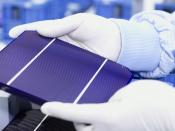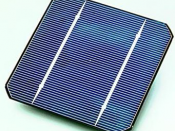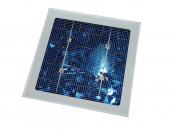Solar cell technology dates back to 1839, when the French physicist Antoine-Cesar Bequerel observed that shining light on an electrode submerged in a conductive solution would create an electric current. Later in 1877, Charles Fritts constructed the first true solar cell by using junctions formed by coating the semiconductor selenium with an ultra thin layer of gold. His devices were very inefficient but they were a start. In 1930, both the selenium cell and the copper oxide cell were being employed in light-sensitive devices. One device was the photometer, used in photography. These cells were still very inefficient though. Solar cell efficiency finally saw substantial progress with the development of the first silicon cell made by Russell Ohl in 1941. Later on in 1954 three American researchers by the names of G.L. Pearson, Daryl Chapin, and Calvin Fuller demonstrated a further- refined silicon solar cell. By 1958, Federal support for photovoltaic technology was initially tied to the space program, where its use was to provide power for the Vanguard satellite.
Spurred by the first oil embargo that year, interest in terrestrial applications for photovoltaics blossomed. By the late 1970s, a program for the development of distributed photovoltaics was established by the U.S. Government at the Massachusetts Institute of Technology, focusing on design and demonstration issues for the buildings sector. Then the Energy Tax Act of 1978 established a 10 percent investment credit for photovoltaic applications. Later on that year, the Solar Photovoltaic Energy Research Development and Demonstration act committed about $1.2 billion over ten years to improve photovoltaic production levels, reduce costs, and stimulate private-sector purchases. The photovoltaic commercialization program established a photovoltaic commercialization pathway, accelerating the installation of photovoltaic systems in Federal facilities. By the 1980s silicon cells, as well as those made of gallium arsenide, had been fabricated.



Good effort
obvioulsy a lot of reseach has been done on this essay. We need to take more notice of this stuff so we can stop destroying the planet.
2 out of 2 people found this comment useful.